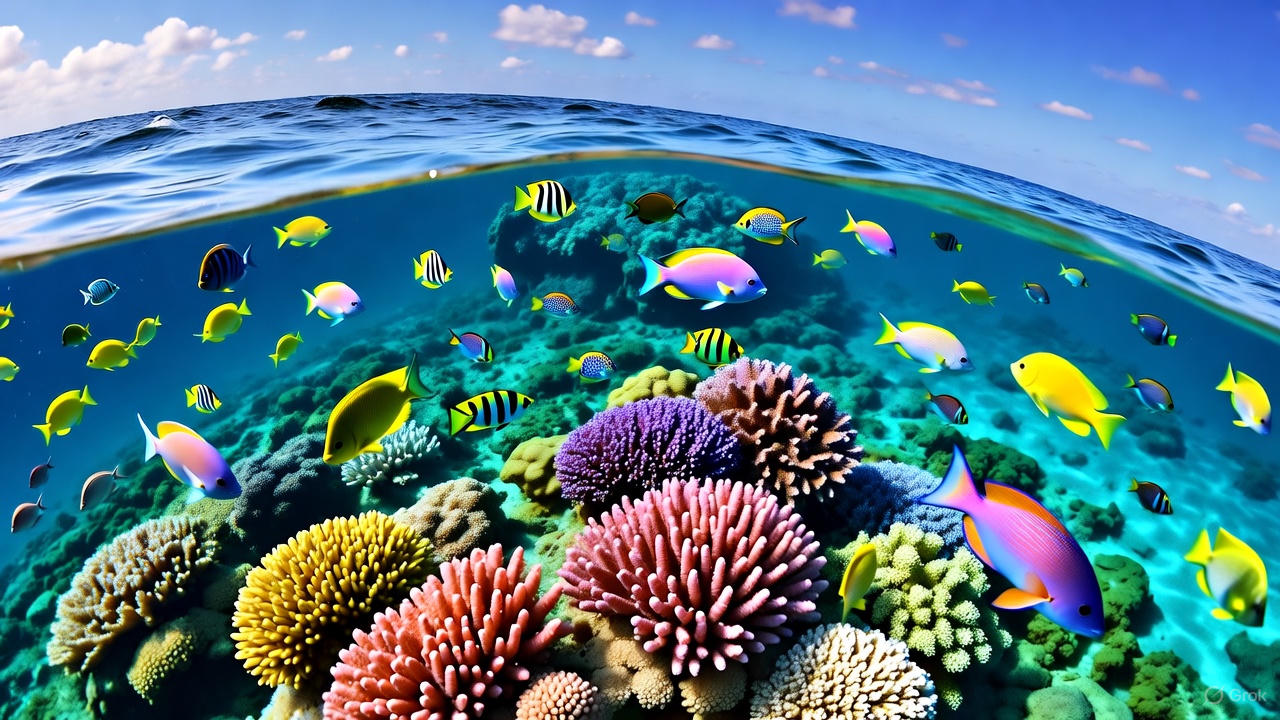Reef’s Splendor
The Great Barrier Reef, the planet’s largest coral ecosystem, spans 2,300 kilometers along Queensland’s coast. Comprising 2,900 individual reefs and 900 islands, this UNESCO World Heritage site hosts over 1,500 fish species, 400 corals, and endangered marine life. Visible from space, it’s a living masterpiece threatened by climate change. I explored in Australia’s summer—December to February—for warm 28°C waters, ideal visibility, and humpback whale migrations.
Gateway: Cairns or Port Douglas
Fly into Cairns International Airport, the main hub with direct flights from Asia and domestic connections. From there, high-speed catamarans depart daily to reef pontoons. Port Douglas, an hour north, offers upscale resorts and quieter launches. Stay in Cairns for vibrant nightlife or Port Douglas for beachfront luxury. Book multi-day liveaboard dives for remote sites.
Prime Snorkel and Dive Sites
Heart Reef Discovery
This natural heart-shaped coral formation in Hardy Reef is best viewed from above. Helicopter or seaplane tours from Hamilton Island provide breathtaking aerials—perfect for proposals. Underwater, nearby reefs teem with Maori wrasse and giant clams.
Agincourt Ribbon Reefs
Edge of the continental shelf: Wall dives drop 1,000 meters. Spot reef sharks, manta rays cleaning stations. Night dives reveal bioluminescent plankton and sleeping turtles.
Cod Hole
Famous for potato cod—up to 100kg—hand-fed by divemasters. Schools of barracuda swirl; visibility exceeds 30 meters.
Low Isles and Opal Reef
Family-friendly: Shallow lagoons for snorkeling. Glass-bottom boats reveal brain corals, anemone homes for clownfish.
Marine Life Highlights
Six sea turtle species nest on beaches—green turtles haul out at night. Dugongs graze seagrass meadows. 30 whale and dolphin species, including dwarf minke whales June-July. Sharks: Harmless whitetips, grey reefs. Colorful inhabitants: Parrotfish munch algae, creating sand; cuttlefish camouflage masters.
Island Adventures
Whitsunday Islands
74 tropical isles: Whitehaven Beach—99% silica sand, Hill Inlet swirling tides. Sail or kayak; camp with permits.
Lizard Island
Granite boulders, luxury resort. Dive Cod Hole; hike to Cook’s Lookout—Captain Cook’s 1770 vantage.
Lady Elliot Island
Eco-resort on southern tip: Manta ray hotspot year-round. Green turtles hatch December-March.
Eco-Tourism and Conservation
Join Reef Restoration: Plant coral fragments on nurseries. Great Barrier Reef Marine Park Authority citizen science—log sightings via Eye on the Reef app. Avoid single-use plastics; choose operators with eco-certification. Bleaching events underscore urgency—visit sustainably.
Indigenous Connections
Dreamtime stories: Yirrganydji people guide cultural tours, sharing bush tucker and spear fishing.
Culinary Delights
Fresh catches: Coral trout grilled, mud crab salads. Tropical fruits: Mangoes, pineapples. Reef pontoons serve buffet lunches; sunset dinners on decks.
Adrenaline Add-Ons
Scenic flights: 60-minute reef overviews. Raft Tully River rapids. Daintree Rainforest ziplines nearby.
Accommodation Variety
Luxury: qualia on Hamilton—private plunges. Mid-range: Daydream Island resort. Budget: Cairns hostels, island camping.
Essential Tips
Stinger season November-May: Wear full lycra suits. Reef-safe sunscreen only. Book ahead—permits limited. Fly drones restricted. Carbon offset flights.
The Reef captivates: Turquoise expanses, underwater symphonies. Turtles soar, corals pulse life.
My pinnacle: Dawn dive, rays filtering through water columns, surrounded by fish schools.
Solo divers find peace; families love semi-subs; couples cherish helicopter hearts.
Daily cost: AUD 300 including tours.
Protect this wonder—dive responsibly!
(Word count: 712)

